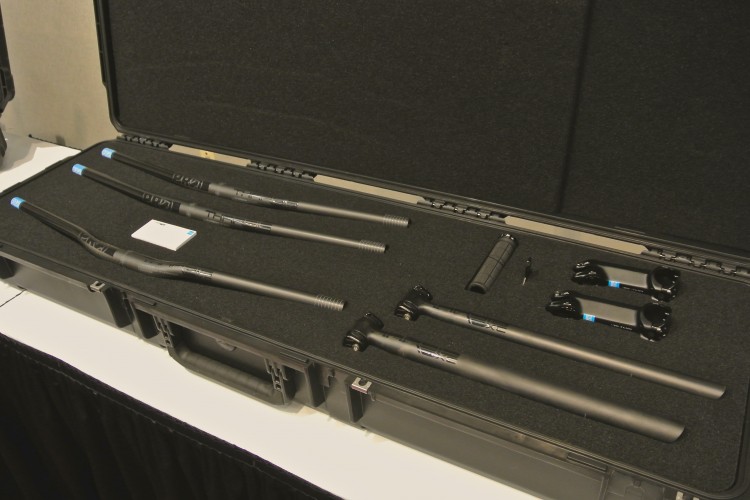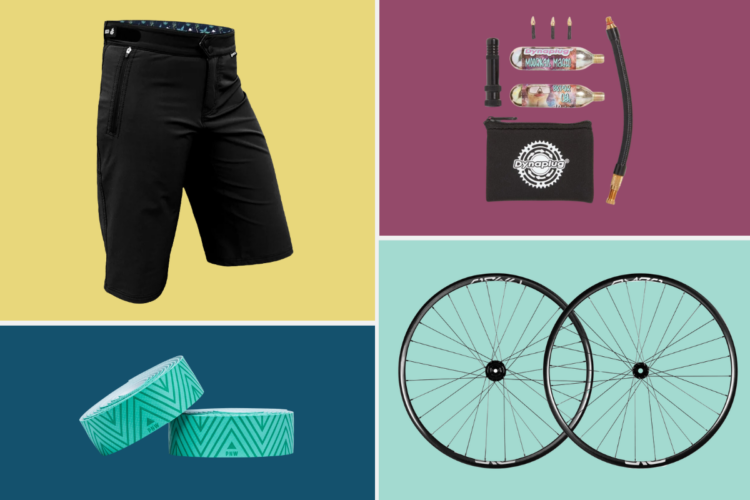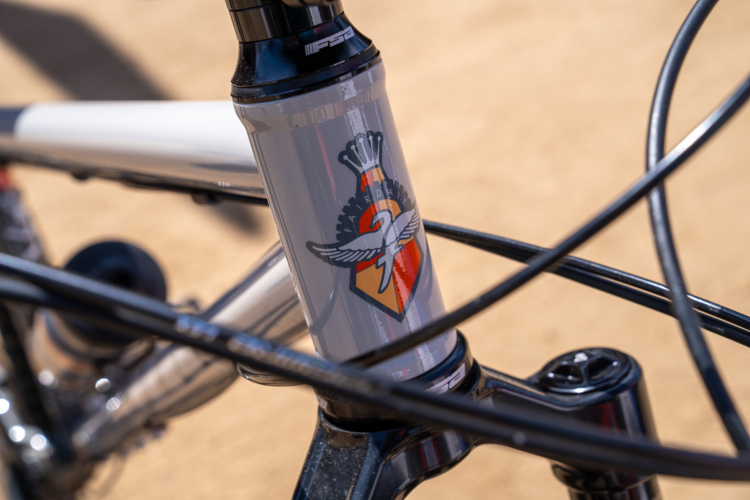
Mountain biking is expensive. There’s no way around it.
While we can appreciate the simplicity of sports like basketball, running, and boxing, where the buy-in is minimal and the industry doesn’t shove technological breakthroughs down their athlete’s throats quite as much as they do in our sport, we’re all hooked anyway.
Most of us would sell our cars before we sold our bikes. The cost is just something we bear.
If you missed the first part of this two-part series that focuses on the costs of mountain biking, check it out here.
In the first story, I tried to find out why exactly mass-market bikes don’t hold up over time. I spoke with B Vivit from the United Bicycle Institute in Ashland, Oregon, Andrew Thomas, a service manager from a non-profit bicycle organization in Denver, Colorado, and Arnold Kamler, the CEO of Kent and Bicycle Corporation of America, two mass-market bike brands that assemble bikes in the U.S.
What I found is that while mass-market bikes will of course fall apart more quickly than a premium bike, they’d last much longer if they were assembled properly and regularly maintained. Kind of a no-brainer, right? The problem is that mass-market bikes are mostly bought as “toys” and consumers don’t find an incentive to maintain them.
For this story, I tried to learn about the costs that go into building premium mountain bikes.
I spoke with Matt Giaraffa and Will Montague from American mountain bike manufacturer Guerrilla Gravity, Nick Murdick, the product manager for Shimano’s mountain bike line, and Arnold Kamler again from Kent Bicycle and Bicycle Corporation of America (BCA).
My investigation quickly ran down a rabbit hole. Strength-to-weight ratios, research and development, profitability, and price-point settings determine how mountain bikes are priced.
Then Murdick pointed me to another field altogether, pockmarked with new rabbit holes. Price-points get deeper, retail prices are marked up numerous times in the journey from manufacturer to consumer, and there are different models that bike brands use to spec their bikes with build kits.
However, I did emerge with a few big takeaways, so let’s start there.
You could buy a motorcycle for that much
Most of us have heard it before. A friend or family member who doesn’t ride finds out how much a good mountain bike costs, and quickly tells you that you should have bought something with a motor.
Matt Giaraffa’s decision to get into mountain bike racing was guided by research into this debate. Giaraffa, now the chief engineer at Denver, Colorado based mountain bike company Guerrilla Gravity, looked at what it takes to build a competitive mountain bike versus a competitive motorcycle.
“Price comparisons between high end mountain bikes and motorcycles happen often, but usually compare a very high end, race-ready mountain bike to a base-level, standard motorcycle and say they are the same price,” says Giaraffa.
Although a motorcycle might have a motor and cost the same as a premium mountain bike off the sales floor, the performance doesn’t translate. Someone can race a $5,000 enduro or cross-country mountain bike and be competitive, whereas a competitively built motorcycle could cost three times as much.

Then there’s scale and volume. Motorcycle companies are able to save money by producing at a mass volume.
“Something like a motorcycle is built on a much larger scale than a mountain bike,” says Montague.
Finding the right scale has been key for Guerrilla Gravity to nail the price point it wants for its bikes. Guerrilla Gravity brought a CNC machine and all production and manufacturing under one roof this year. Doing this allowed them to drop the price on all of their bikes by $200.
“When you get to a certain volume it just makes sense to do it in house,” says Giaraffa.
Montague explained that outsourcing didn’t make sense for them or the brand’s long-term goals. The third party becomes concerned with volume and meeting demand and focuses on pushing out product. The hiring brand needs to take the time to ensure that quality assurance is being met on the other end.

Guerrilla Gravity is also able to run a lean manufacturing operation, and rather than build in anticipation of sales and end up with a surplus, they match to demand. The downside is a seasonal wait time for consumers, but the upside is a savings in operational costs. This way, Guerrilla Gravity doesn’t end up with a room full of bikes that didn’t sell at the time of a certain trend or demand.
Bicycle Corporation of America, a mass-market brand sold in departments stores, moved their assembly operations from overseas to a factory in Manning, South Carolina not only for better quality assurance, but because labor and real estate prices in China have risen and will continue to, Arnold Kamler predicts.
BCA produces a massive scale of bikes every year and can’t afford to screw up any part of their process.
“We sell about three million bikes a year. For us, there’s no such thing as a small mistake,” Kamler says.
BCA, like other mass-market bike manufacturers, keep their frame tubing thick so that its bikes don’t break. Consumers get a heavier, but more durable frame.
Strong and light
The strength-to-weight ratio may be the biggest factor in the expense of a premium mountain bike and it’s driven by consumers.
“Mountain bikes are incredibly difficult in the first place for this,” says Giaraffa. “You need everything to be super light like you would in aerospace, but it needs to be much cheaper to produce. Without a doubt it’s the most difficult industry I’ve worked in, having worked in a handful.”
Consumers of course want the lightest bike possible in the strongest package. Mountain biking sends stress loads throughout the entire frame and development is a game of learning where it’s possible to shave weight and where it’s necessary to keep it for strength.

“If you look at our CNC-machined parts, we spend quite a bit of time whittling out the aluminum to save 3g over here and 5g over here,” said Giaraffa. “If you said screw it, let’s just make it a bit cheaper, you could do that but then your frame would be ten pounds,” Giaraffa says.
Guerrilla Gravity says that manufacturing — the cutting, shaping, machining, and welding of the tubes — is its biggest expense. The next largest expense is the component package.
For carbon fiber bike manufacturing, it works similarly. Brands like Yeti and Santa Cruz now offer different grades of carbon fiber in their frames for different price points. A premium frame is lighter, but costs more. Both are said to be equally strong.
The molding to build a carbon fiber frame can also add up quickly. The molds are usually CNC machined from a solid block of metal and each frame size needs its own mold. A mold for one frame model in one size can range in the tens of thousands to over a hundred-thousand dollars.
The same considerations are given to mountain bike components. Although the performance may not be that much different between a mid-tier brake and a premium brake, the premium may only see a different finish and titanium or carbon hardware, rather than aluminum or steel.
Take the TRP G-Spec Quadiem brake for example. It is exactly the same brake as the Quadiem, but with a polished finish rather than painted. This raises the price by $50.
The same goes for XTR. The laser etchings and anodizing process “makes a big difference in the finishing price,” says Nick Murdick of Shimano.
Murdick explained the processes of building a brake for the top-level XTR line versus a more entry level brake like the SLX.
An XTR brake caliper is machined from one piece of aluminum or magnesium whereas another brake in their line might be made from two pieces of forged aluminum. It’s more costly and time consuming to machine something from one piece, rather than cut it in two and then forge it, but it is lighter.
Expenses
In the most primal form, bicycles and components start from a raw piece of metal.
Unfortunately, Guerrilla Gravity couldn’t reveal their raw materials costs before the aluminum tubes are turned into a frame.

Kamler with BCA estimated that the raw cost of materials to build a 27.5-inch steel mountain bike frame is around five or six dollars. Kamler then noted that the manufacturing, cutting, and bending quickly makes it more labor and cost intensive.
The most painstaking process for BCA is deciding on a component kit to spec their bikes with to get it to a certain price point, as each model often comes in just one size, paint scheme, and build kit.
Guerrilla Gravity and Shimano both said that they set a target price for a product first, and then figure out how to get there. Murdick says that there’s been plenty of projects that have been axed due to manufacturing costs.
For Shimano the most expensive part is taking a product from prototyping to production. This has been such a complex process for them, that Shimano now has a full-time production team.

“It’s crazy expensive — our prototyping and coming to production process,” says Murdick.
When Shimano introduced hollow forged crank arms it required a completely new bonding process to get two pieces perfectly aligned and allow gasses to escape during the forge.
The target retail price is determined before production happens, but that doesn’t mean unexpected expenses don’t happen along the way.
“Our team in Japan will hint at it, like, if you needed to put a price on it, that derailleur would cost $10,000 because it’s been so many man hours just to build the thing on the computer,” said Murdick.
Although products like XTR obviously have the most bling and the heftiest price tag, that’s not where Shimano makes its money. Murdick explained that the most expensive products usually have the lowest profit margins. Part of this is due to scale, since premium products aren’t generally manufactured in high volumes.

“Cheaper stuff is really simple, because everybody just doubles the price and re-sells it,” he says. “The default thing for bike shops on service items is you just double the price, kind of for simplicity’s sake.”
The nuts and bolts of mountain bike hardware makes its way from Shimano to distributors, and then often more distributors before landing at a retailer. For components there are suggested retail prices, but not for service items.
What doesn’t cost Shimano a lot, Murdick said, are sponsorships.
“If you actually did the math, I would expect it to drop the price of a component by a penny or two, if [we] stopped all sponsorships.”
Evolution
Lastly, mountain bikes may be expensive, just because they have become more advanced. Technology has progressed, bikes come with more than they used to, and for the sport as a whole, that’s a good thing.
[see_also id=’206867′]
This isn’t to say that everything is more expensive, because as time goes on, brands like Shimano develop technology on the XTR line so that some of it can trickle down to its more affordable SLX line. New technology becomes more affordable and in the past few years, brands have made strides by providing affordable dropper posts and 1×11 and 1×12 drivetrains.
“If you just look at the bikes we were riding in 2005, flat tires were way too prolific, they would crumble at the pace we ride them at now, the brakes were awful, the suspension was junk, there were no dropper posts, the drivetrain was crap,” said Giaraffa of Guerrilla Gravity.
If we looked at a 2008 Yeti Cycles 575, the price reflects the available technology at the time. The 575 had an aluminum frame with a carbon rear triangle, a 27-speed Shimano XTR drivetrain, Fox suspension, and bits from Chris King and Thomson. It was the top layer of Yeti cake and it sold for about $5,000, or roughly $6,000 in 2018 dollars.
A 2008 carbon-framed Specialized S Works Epic with Shimano XTR sold for under $7,000, or right about $8,000 in 2018’s value. It’s safe to say that today you’d pay around $2-3,000 more for a high end 2018 Yeti or Specialized model.
But, while prices have increased in unison with technology, brands still look to set price according to value, and consumers buy with the same intent. We’ll pay for what we want, but we’re still going to pay. Is there any other choice?


















